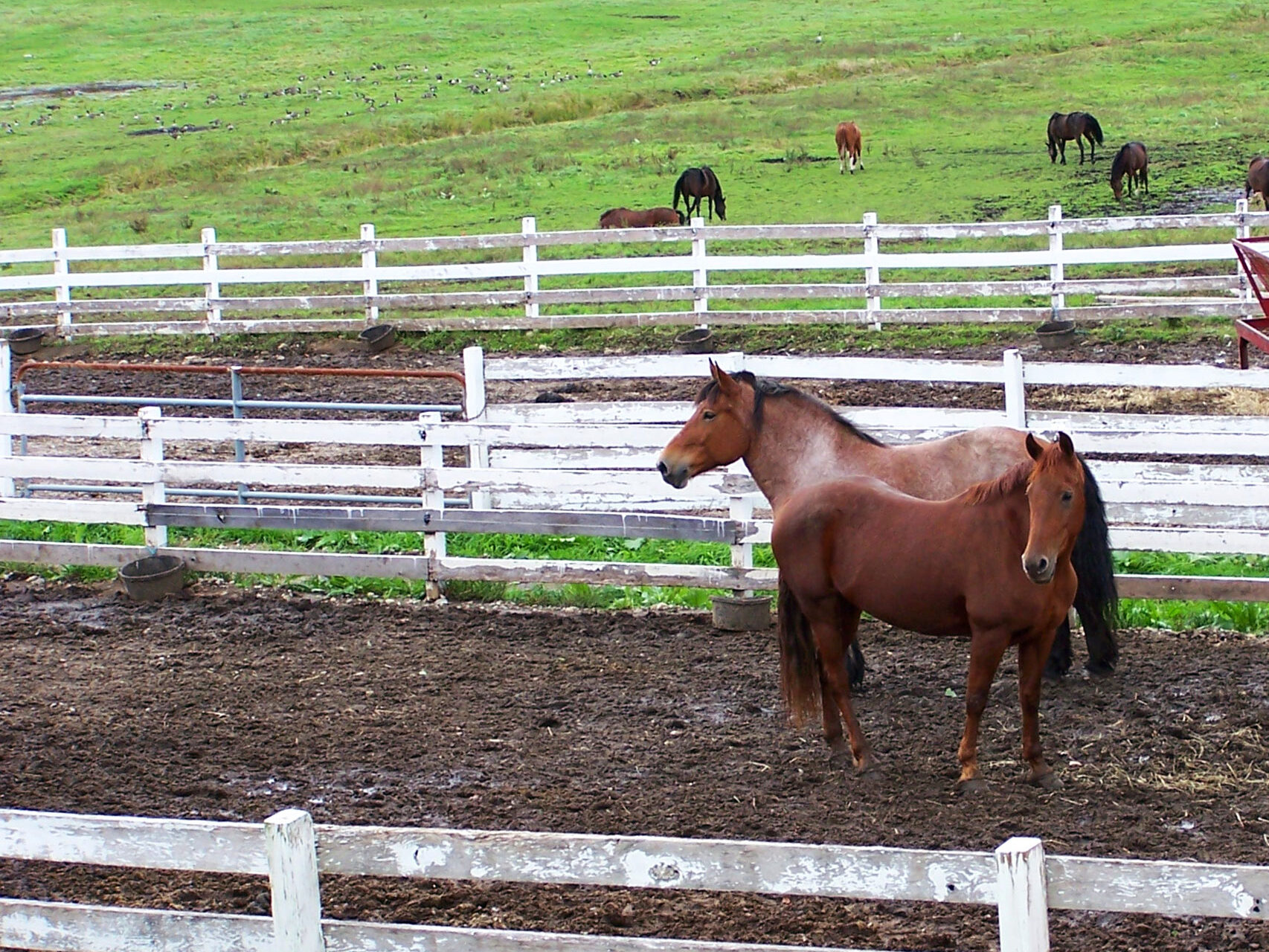
Winter and early spring can be challenging times for horsekeeping, with mud issues at the top of the list.
These tips will help you reduce mud on your horse farm. They are divided into two categories: easy, temporary fixes which you can start tomorrow and long-term solutions which might require equipment and some planning.
Temporary Mud Fixes on Horse Farms
Try these quick ideas to begin handling the mud situation.
- Cover a sloped driveway or path with crushed rock. Often the easiest way to deal with flooding is to simply slow the flow of water. Each piece of gravel helps deflect and slow water, which might be all it takes to reduce erosion and allow water to soak into the ground.
- Install water bars (think speed bumps for water runoff). This can be as basic as laying a log, a large tree branch, or even a jump pole at an angle that intercepts a rivulet (or river) of water running towards your barn and reroutes it away.
- Dig temporary diversion ditches by hand with a shovel. Shallow ditches can divert water flows or drain pooling in paddocks or turnouts.
- Pick-up manure in confinement and high traffic areas daily. This practice reduces parasite reinfestation, and it greatly decreases the build-up of mud. While you’re at it, pick up stray clumps of bedding or leftover hay. All organic material eventually decomposes and leads to more mud.
Long-Term Solutions for Mud on Horse Farms
These techniques can be implemented relatively quickly but might require some research, professional help, and/or specialized equipment.
- Create a confinement area used to keep pastures from becoming overgrazed and muddy, particularly during winter. This area should be on high ground. Use coarse washed sand or crushed rock as footing to reduce erosion and make manure pick-up easier.
- Surround the confinement area with a grassy buffer, such as lawn or pasture, to act as a biofilter for any dirty runoff and reduce mud.
- Install rain gutters and downspouts on all barns and buildings. This diverts clean rainwater away from high traffic areas and will substantially reduce mud.
- Create a grassy swale (a gently sloping grass-lined ditch) where diverted surface runoff can collect and soak into the ground instead of accumulating in a confinement area. Do this during the spring growing season when grass can be planted.
- Install French drains (trenches filled with drain rock and perforated pipe that redirect surface and groundwater away from an area) to reduce the amount of water entering your confinement area. This system should be installed on the uphill side of your confinement area, outside of heavy traffic. Water from this area should be outletted to vegetation on your property, like an unused corner of pasture or an area of trees.
- Create a rain garden, a shallow depression planted with native plants, to capture and temporarily hold rainwater from downspouts. A rain garden is a temporary, miniature pond that slowly drains, recharging the natural hydrology.
- Plant and maintain native trees and shrubs. Plants, especially those which like having their feet wet, use a lot of water and can reduce the amount of standing water on a property. A mature evergreen can drink up to 250 gallons of water per day. Moisture-loving trees and shrubs planted along the outside of a confinement area will help keep that area drier. Examples of horse-safe plants include willow, cottonwood, red osier dogwood, mock orange, and red or golden current. Consult your extension office, conservation district, or a native plants specialist to help select the right non-toxic plants for your situation.
Implement these tips this year, and soon you’ll be able to see a light at the end of the mud tunnel. Reducing mud makes sense—dry ground is healthier for horses, it’s chore-efficient for horse owners, and it’s a sustainable approach for the ecosystem.


